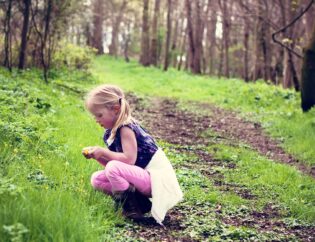
In schools around the world, recess is being cut to make time for more learning. But if enhanced learning is what schools are after, they need to do the opposite and introduce more outdoor time into the school day.
The fact is that when children go outdoors, they are more calm, attentive, creative and cooperative. The good news for teachers is the effect follows them into the classroom, creating a calmer, quieter and safer setting for learning, as well as warmer, more cooperative relations among students.
With the benefits so well-established why don't more schools engage more outdoor time for recess or nature-based learning? While the benefits of outdoor time are well established, taking kids outdoors is Far from being mainstream. It seems your child has to be a part of a specially funded program to boost outdoor learning in cities or underserved communities or in a private school to get outside to learn.
Some countries are doing better than others. Just a small percentage (6%) of teachers in the US say that nothing stops them from getting outdoors.
The Muddy Hands report from the folks behind Outdoor Classroom Day did some deep diving. They asked educators around the world why they don't take kids outside for learning more often. They heard a lot of reasons: weather, extra work, behavior, district guidelines.
Eight out of ten teachers said the weather stopped outdoor play and seven out of ten teachers said it stopped learning outdoors.
In parts of the US and UK light rain was enough to prevent outdoor learning and play; in many parts of Canada, South Africa and Australia time outdoors was only prevented by weather that presented a 'clear risk of death'.
One in five teachers worldwide said poor playground behavior could stop children going outdoors for recess or learning (despite consistent research worldwide saying more play leads to better behavior). In the UK over one third (36%) of teachers reported that children had been kept inside for poor behavior. One in five (19%) of US children were kept in from playtime to catch up on lessons, compared to less than one in ten (9%) in Canada or Australia (8%).
Over a quarter of teachers in the US were worried about extra preparation needed to take lessons outdoors. One in five UK teachers (20%) shared the same concern.
Interestingly, a lack of outdoor space and concern for crime in the neighborhood were not obstacles reported by teachers for more outdoor recess or learning. A total of just four schools out of 629 said they didn't go outside because their school was located in a dangerous neighborhood (one in the US, one in Canada, one in India and one in Australia – note, none in the UK or South Africa). And just four schools said they had no outdoor space (two in the US, one in Romania, one in Canada).
Were parents a problem? Turns out teachers are not worried that parents' notions of learning outside as a problem. The figure is only 2% in the US, 10% of Canadian teachers and 11% of Australian teachers.
Perhaps parents are presenting an obstacle in less visible ways. Remember the phrase, "There's no bad weather, just bad clothes?" Not true to educators in the U.S. who are worried that students increasingly come unprepared for the elements.
Perhaps most disconcerting and revealing, teachers in the US were alone in reporting specific restrictions from going outdoors imposed by the administrator of the school or district. The recess crackdown, as many schools are taking away recess to fit in an ambitious curriculum in an effort to boost testing scores. 'Per district guidelines, we are only allowed to take students outside for 20 minutes on non-PE days and there are limitations on time and the number of students that are outside at one time.' (Teacher in the US)











